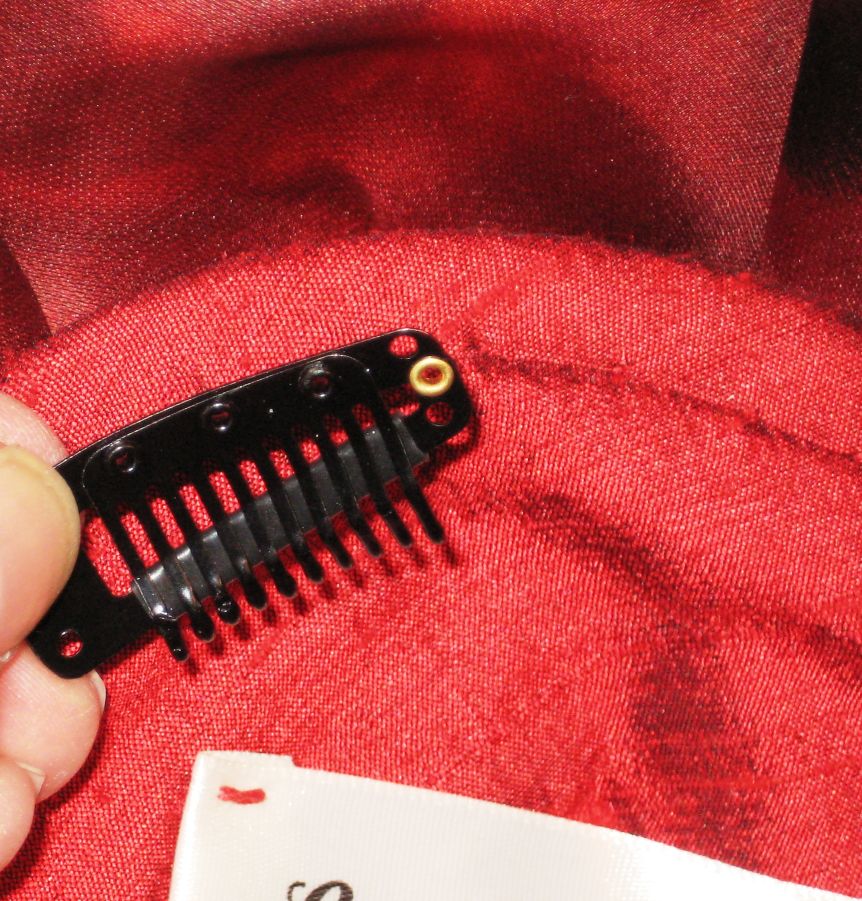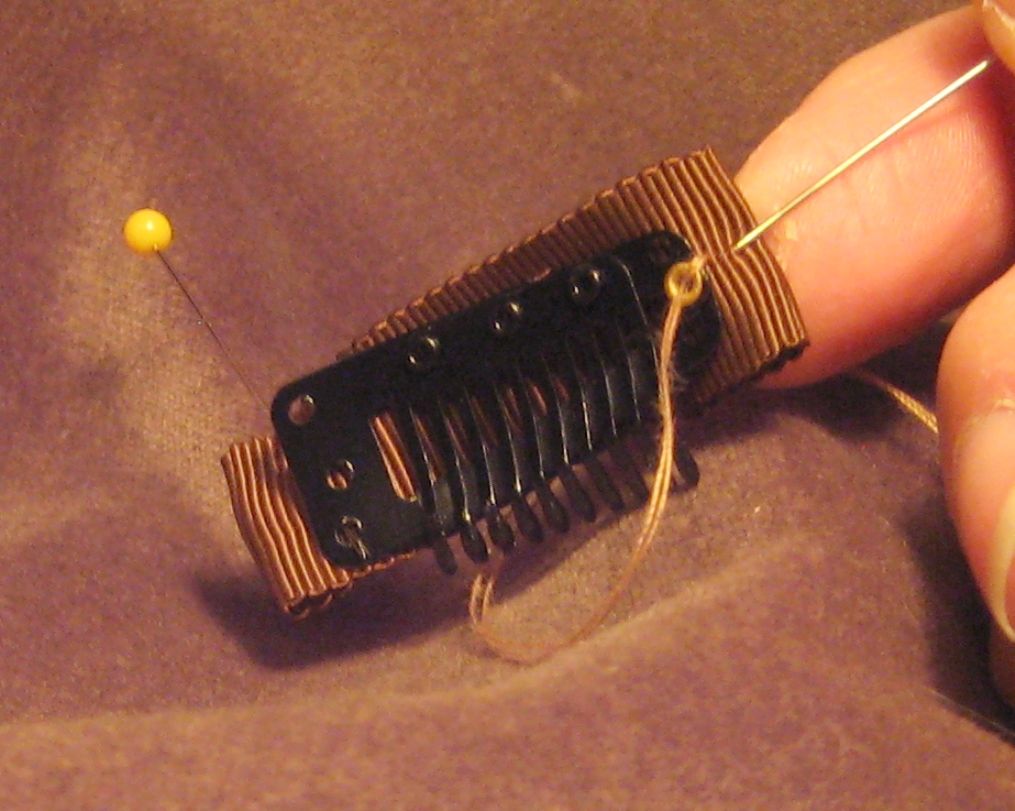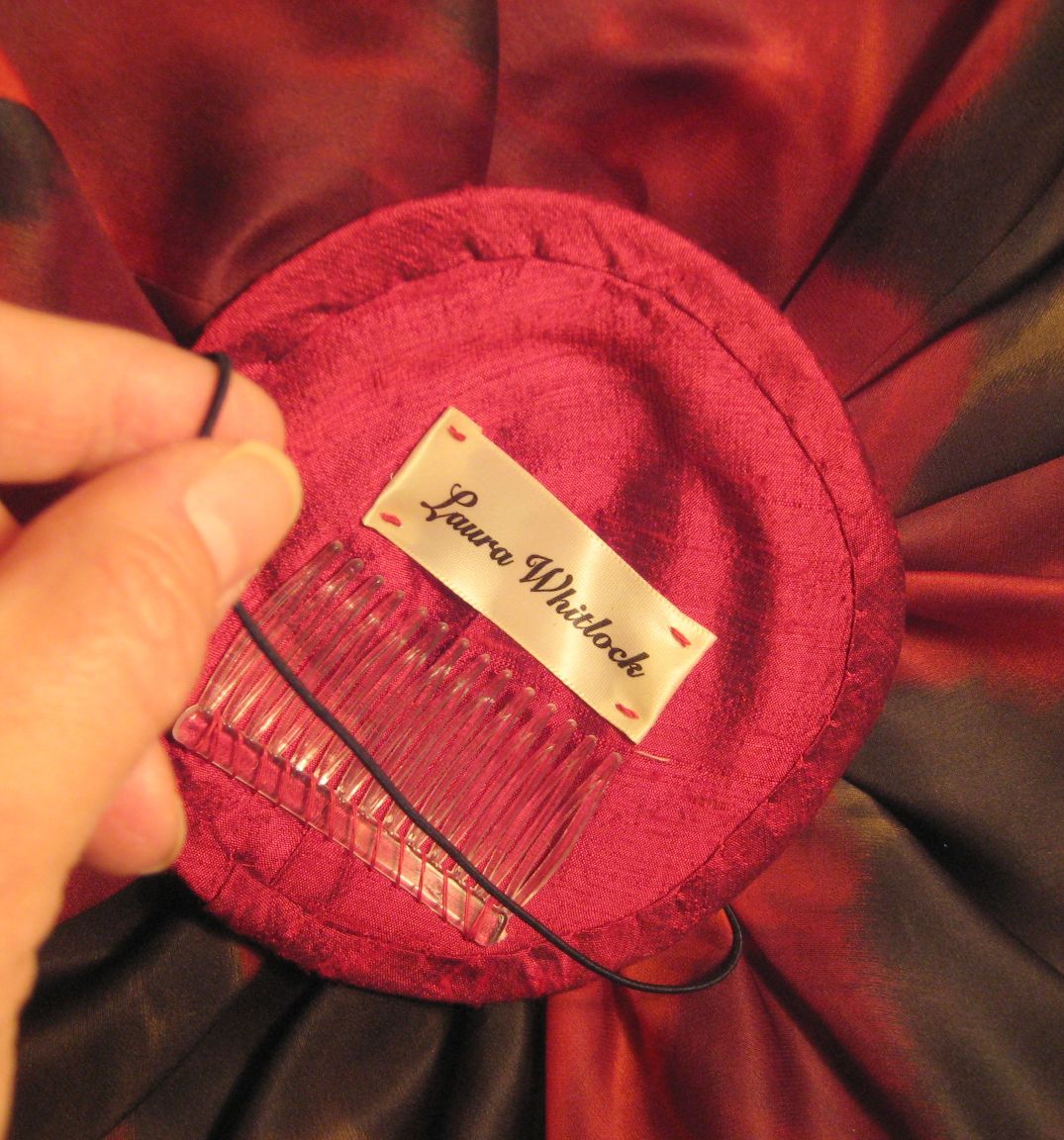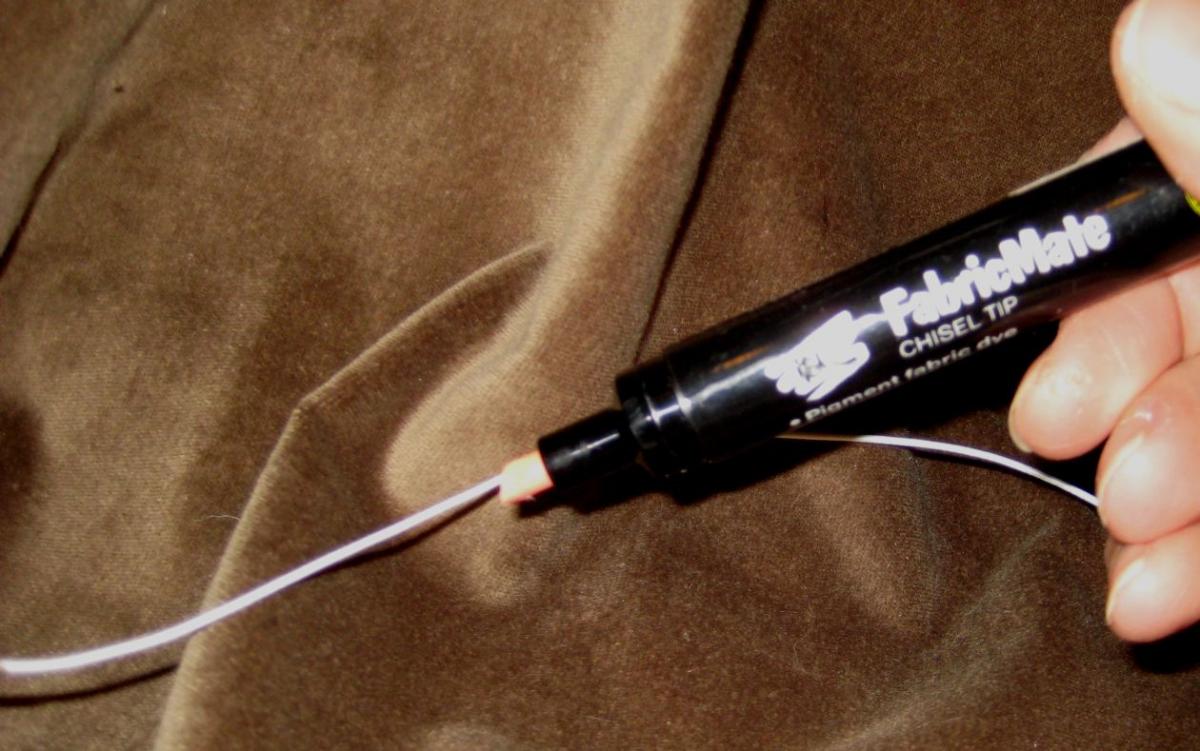Those words give me a perverse thrill every time I hear them. My response? “It’s magic.” Of course a milliner doesn’t need magic to make a hat stay on a head, but a having a bag of tricks does help. I’d like to share with you a few secrets from my own bag of milliner’s tricks, gleaned from 25+ years of creating hats for my own line and for the stage. Over the years, I’ve filled my bag with tricks to make even the most precarious hat stay in place no matter, even through the demands of dancing, acrobatics, sword fights, etc.
1. Combs
Perhaps the most basic attachment for a hat or a small headpiece/fascinator is a comb. It’s so basic that I feel almost silly mentioning it. Combs come in metal and plastic in a variety of colors and sizes.
Combs can be sewn directly into the hat, usually at the center front or back depending on how the hat is to be positioned. Plastic combs can be cut to a custom length with a pair of wire cutters. It is often a good idea to wrap the base in ribbon for a more secure attachment and a better appearance.
Perhaps you’ve noticed that many vintage hats have combs attached with elastic loops. This is a particularly good idea if the hat is to be worn over an updo, as it allows the wearer to manipulate the comb placement for better attachment. 3-inch elastics are ideal for this. Elastic looping also works well as an attachment for combs or as an anchor for hair pins. And it looks cute, too.
One note about combs, which I learned at the knee of the late, great theatrical wig master, Frank Bowers, is that they are rarely appropriate for stage purposes. Combs are disruptive to hairstyles and potentially damaging to wig lace. Horsehair accouterments and hairpins are used almost exclusively. I’ll discuss those a bit later.
2. Fascinator Clips
We use these in theatre all the time. Talk about magic—these little sew-in wonders pop open and snap shut with little teeth to grip even the shortest hairstyles and hold small hats in place.
And here’s another trick–Sew them to a piece of grosgrain first, if you find the sew holes difficult to see when you’re working inside of a hat.
3. Elastics
Elastics, especially in combination with a comb are my go-to attachment for real-world light-weight cocktail hats & fascinators. Nothing is simpler to use or more comfortable to wear than this combination. Just push the metal ends of the hat elastic through the interior gros grain band. For best results, place the elastic a little over halfway toward the front of the hat on either side. Small hats have less of a tendency to pop off that way.
Hat elastics come in many colors and can be easily concealed in one’s hairstyle. (at Judith M it is offered in black, brown and white. And here’s one from my bag of tricks—if black or brown isn’t just right, buy white elastics and use fabric markers to match them to your client’s hair color). Magic happens.
In our next blog, Ms Whitlock will discuss using horsehair/crin as a tool in keeping hats on and making a “kickstand” for securing a hat.
This article was submitted by Laura Whitlock, Laura Whitlock Millinery. A charter member of Millinery Arts Alliance, Laura Whitlock began her career creating hats for the stage. Her resume includes projects for theatre, film and corporate clients, along with teaching millinery at DePaul University. For over 20 years, Laura has produced her own line of fashion hats, Laura Whitlock Millinery.








